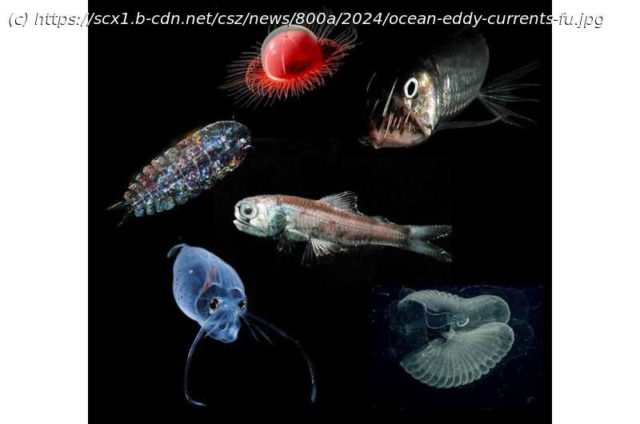On land, we’re familiar with heat waves and cold snaps. But the deep sea also experiences prolonged periods of hot and cold.
On land, we’re familiar with heat waves and cold snaps. But the deep sea also experiences prolonged periods of hot and cold.
Marine heat waves and cold spells can severely damage ocean ecosystems and habitats such as coral reefs. These extremes can also force species to move or die and cause sudden losses for fisheries.
In research published today in Nature, we show almost half of the heat waves and cold snaps reaching the ocean’s twilight zone—between 200 and 1,000 meters—are driven by large eddy currents, swirling currents which transport warm or cold water.
As the oceans heat up, heat waves linked to eddy currents are getting more intense—and so are cold snaps. These pose potential threats to the vast amount of life in the twilight zone, home to the world’s most abundant vertebrate and the largest migration on the planet.
About 90% of heat trapped by greenhouse gases has gone into the oceans. As a result, marine heat waves are arriving more frequently—especially off Australia’s east coast, Tasmania, the northeast Pacific coast in the United States and in the North Atlantic.
Researchers have long relied on satellite measurements of temperatures at the ocean surface to detect these extreme ocean temperature events. Surface temperatures are directly influenced by the atmosphere. But it’s different at depth.
Satellites can’t measure temperatures under the surface, making the deep sea much harder to monitor.
Instead, we have a handful of long-term moorings—measurement buoys suspended at depth—across the world’s oceans. These are hugely valuable, as they continuously record temperatures and make it possible to detect extremes temperature changes.
In recent decades, there have been welcome advances in the form of Argo floats—robotic divers which dive 2,000 meters deep and resurface, sampling temperature and salinity as they go.
Start
United States
USA — IT Ocean eddy currents funnel extreme heat and cold to the life-filled depths






